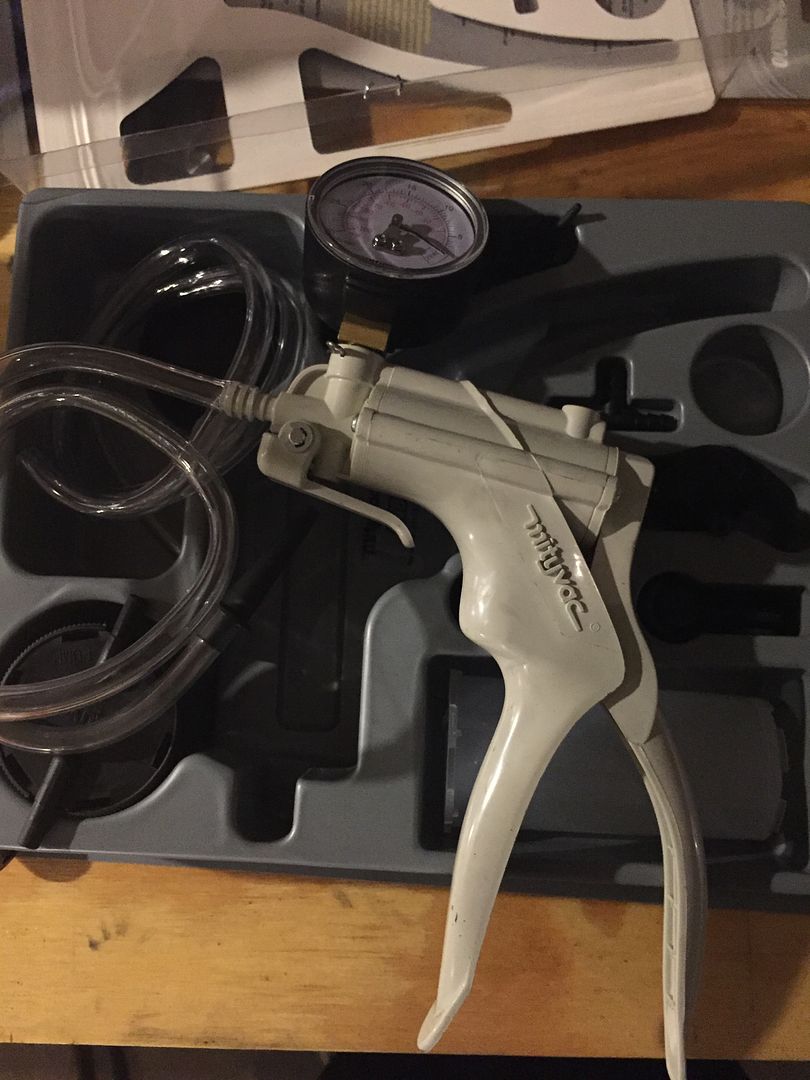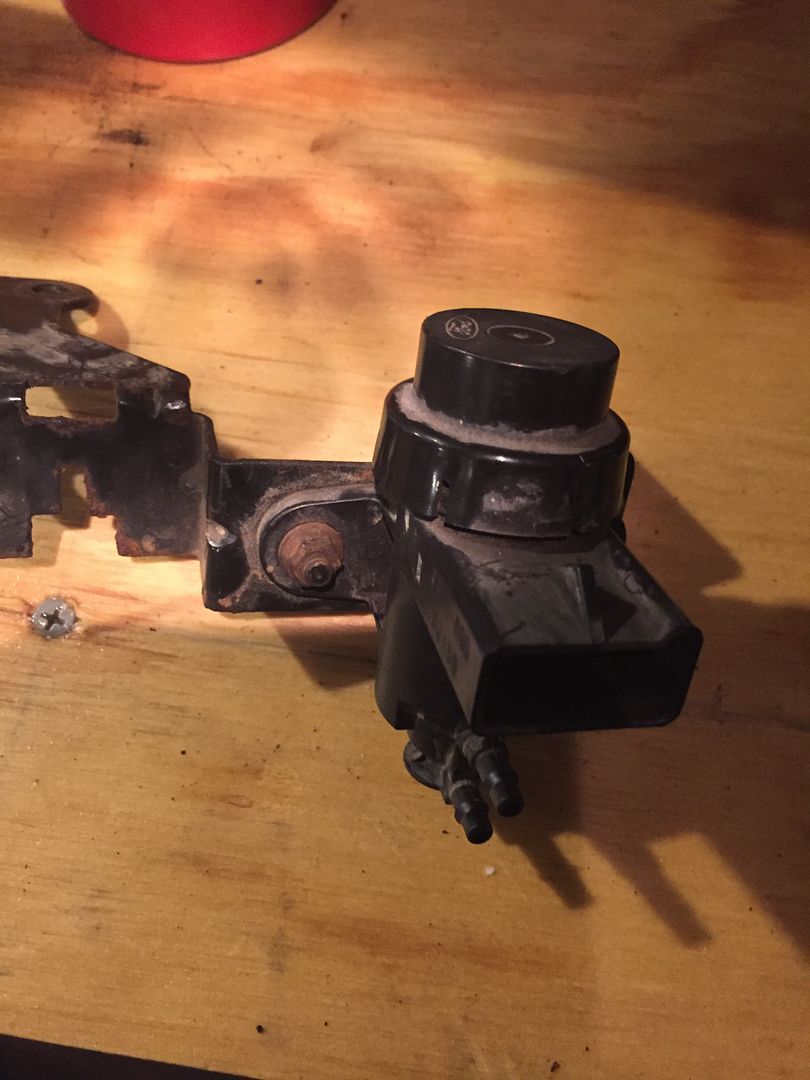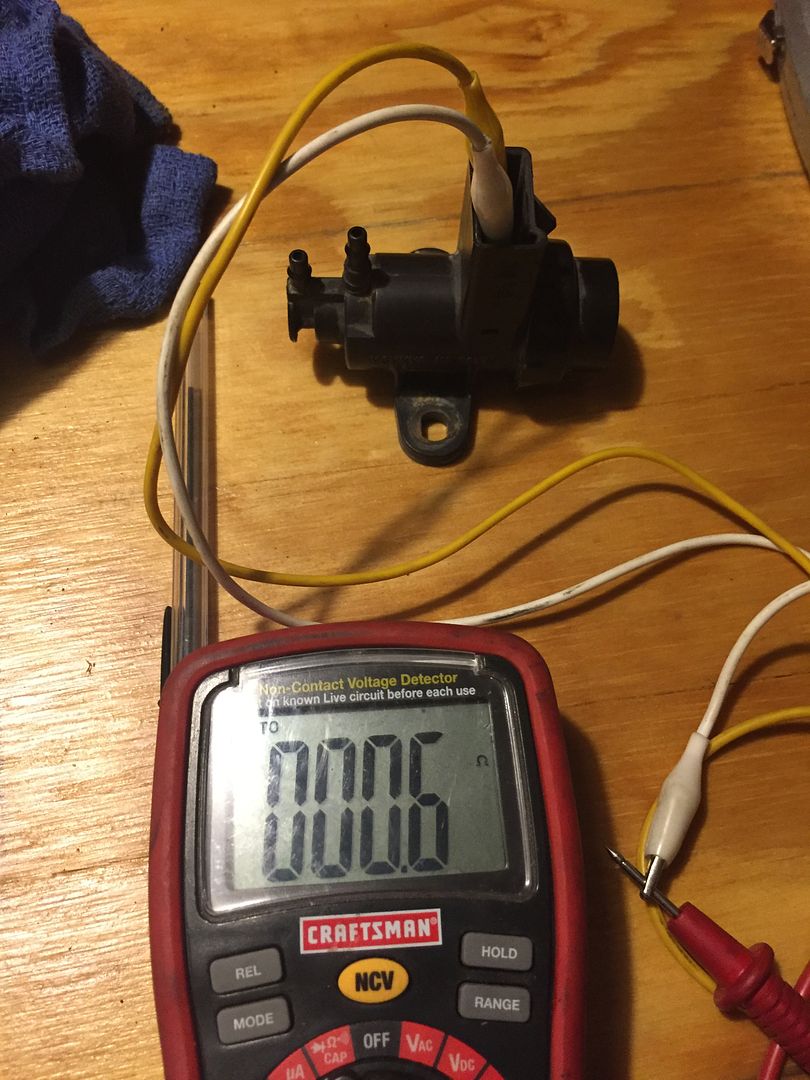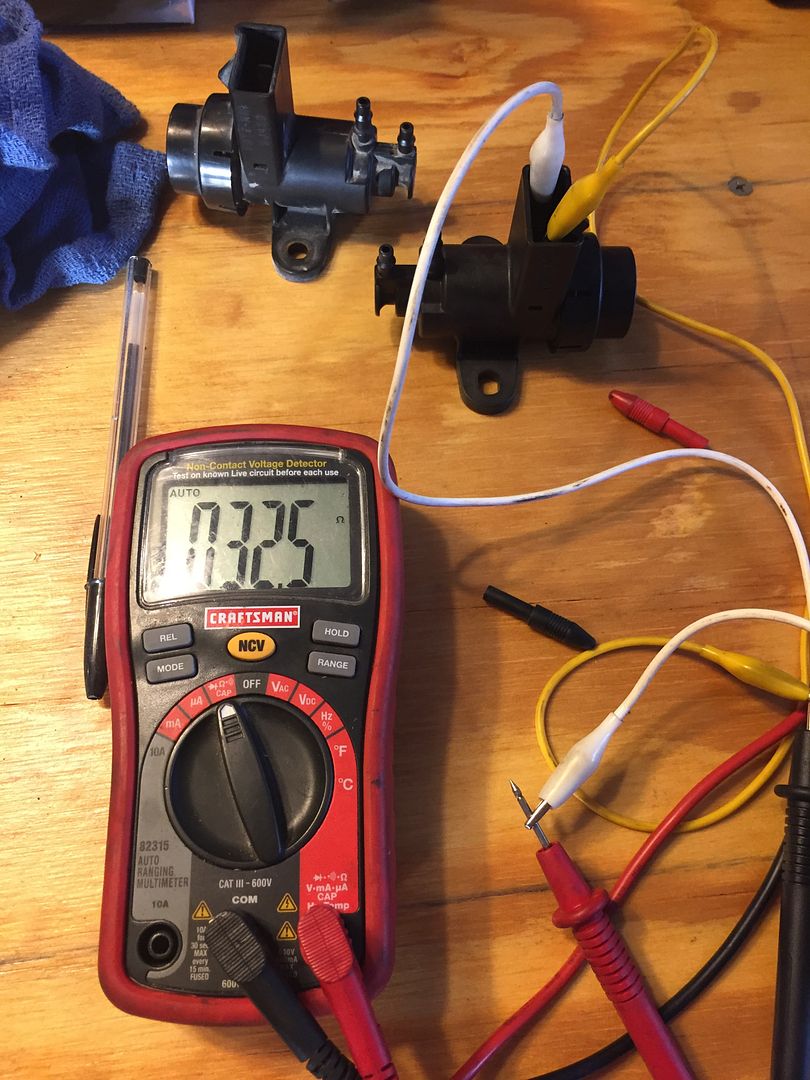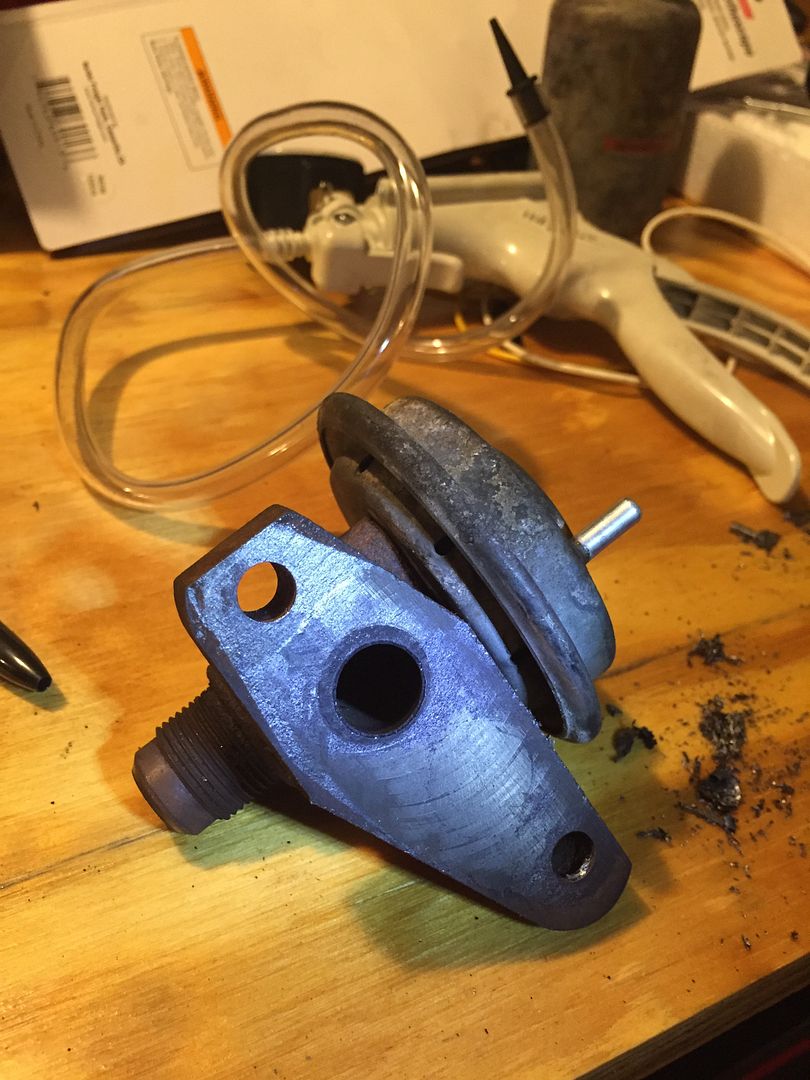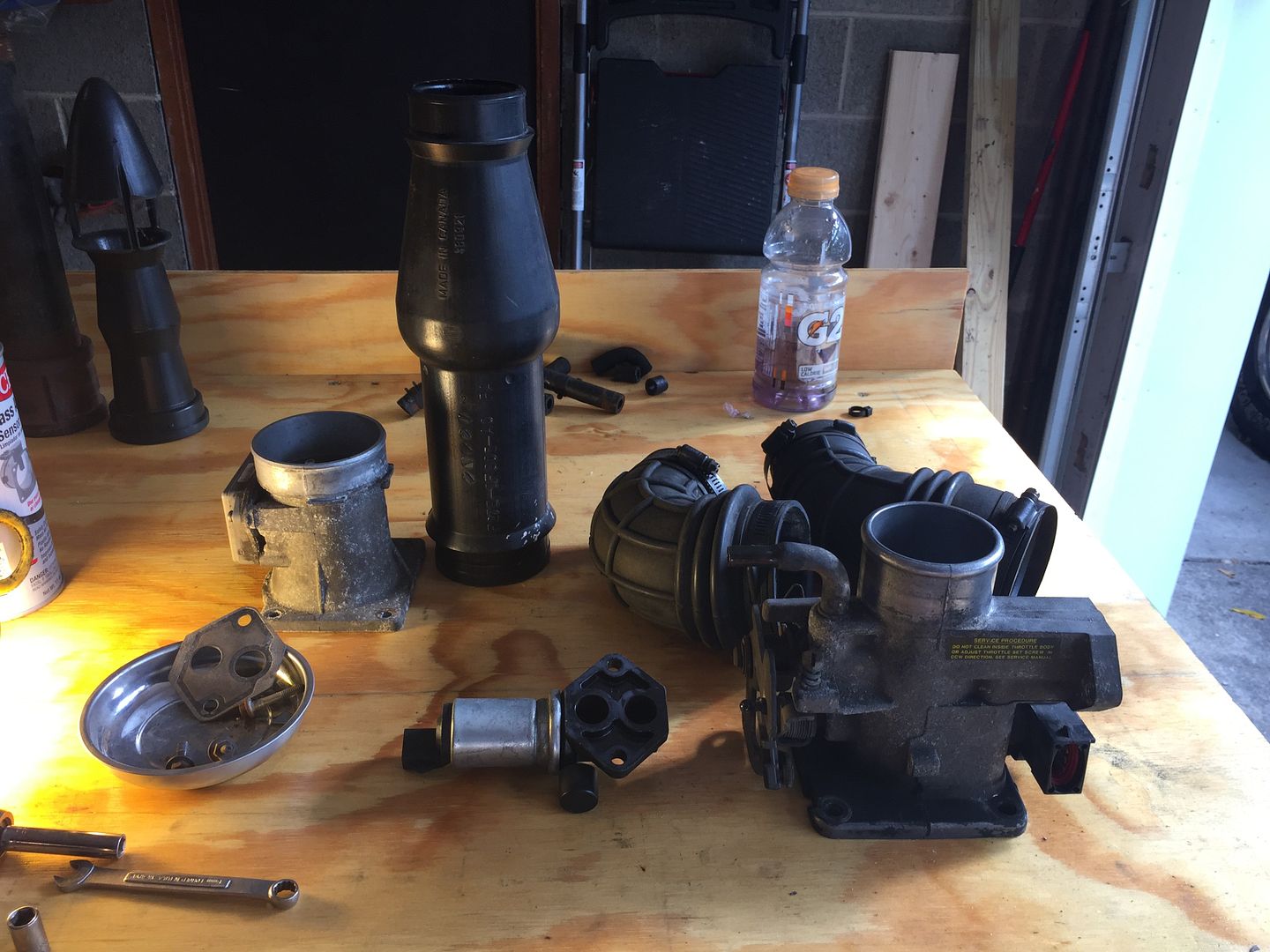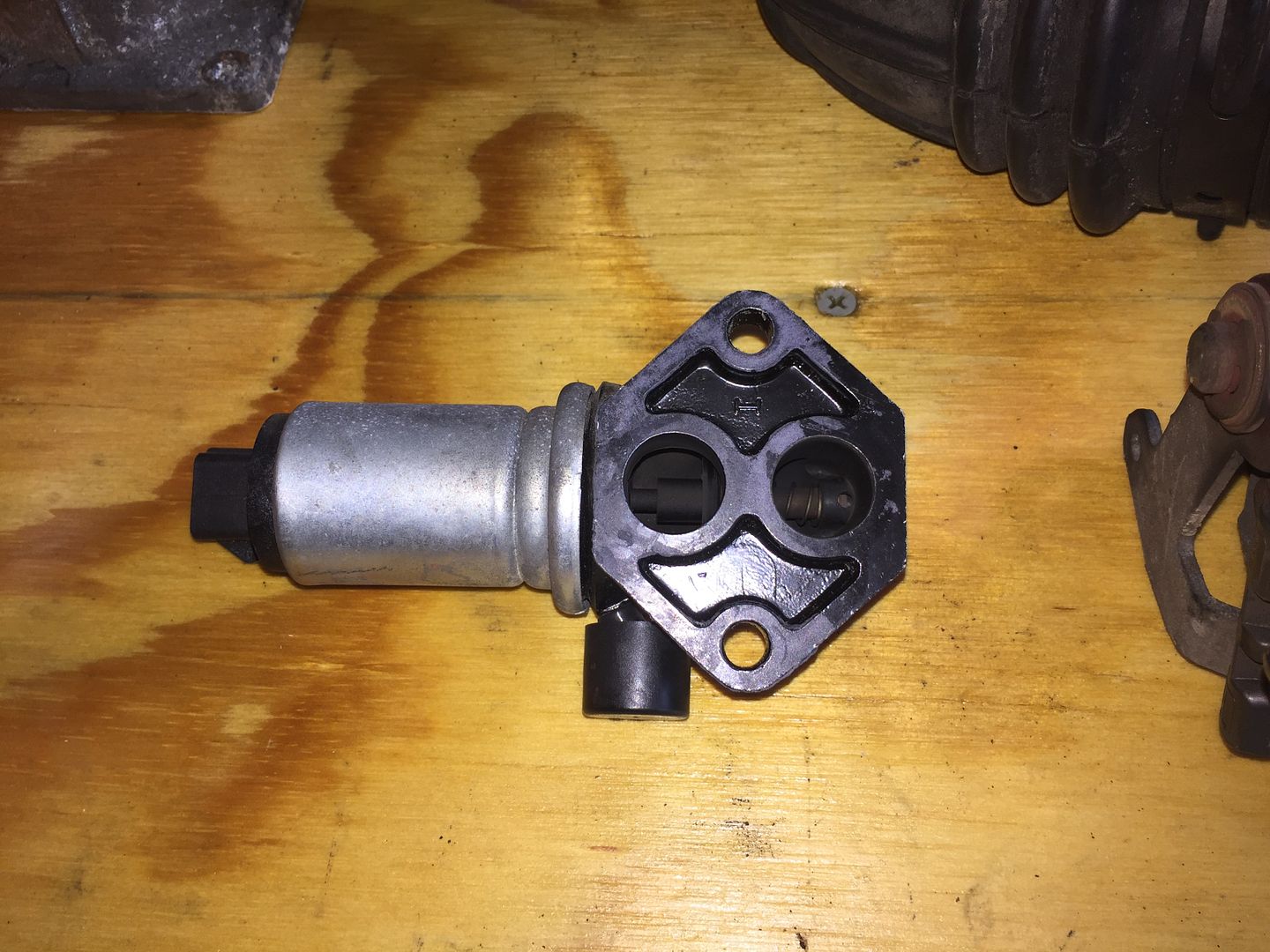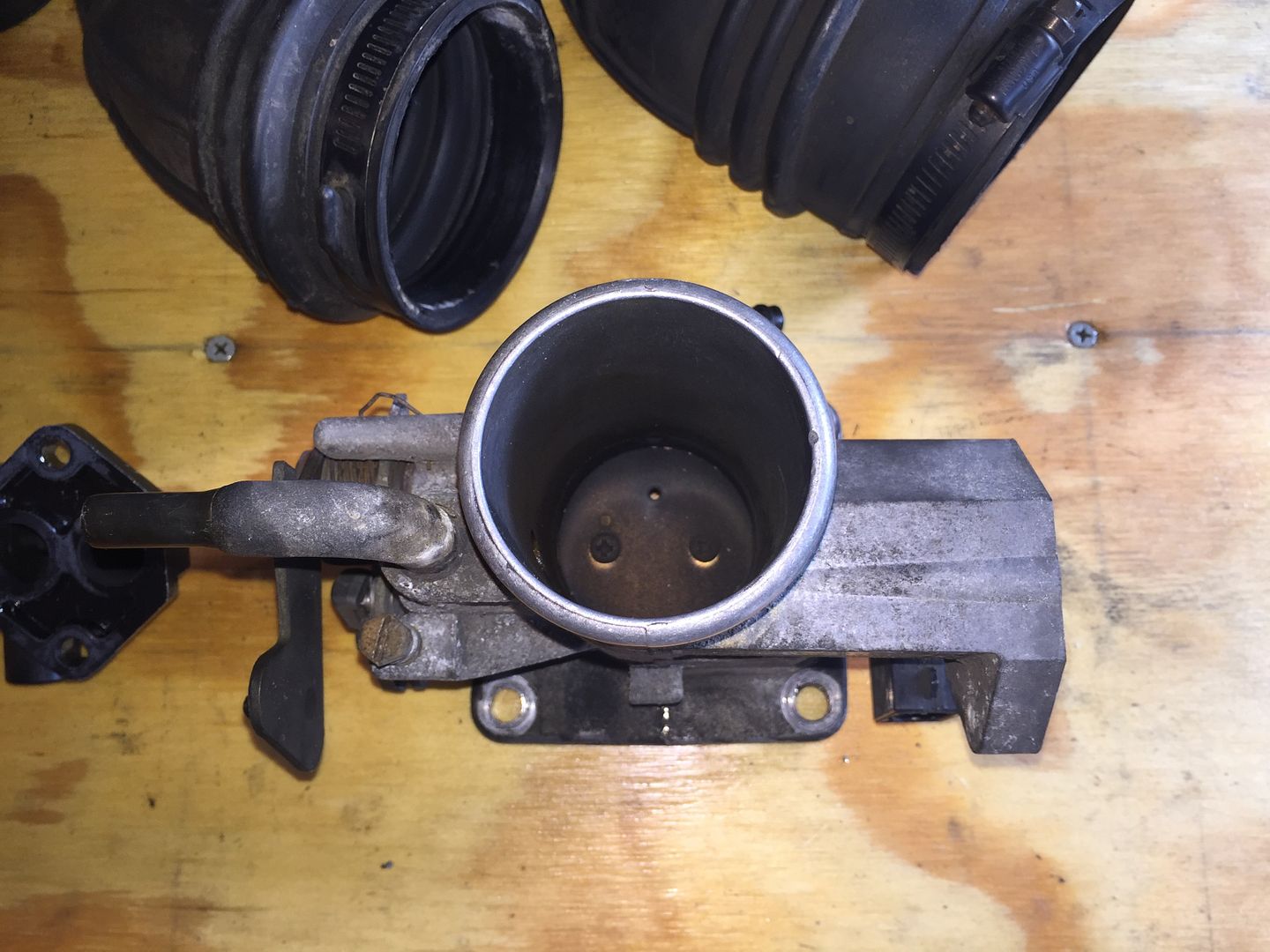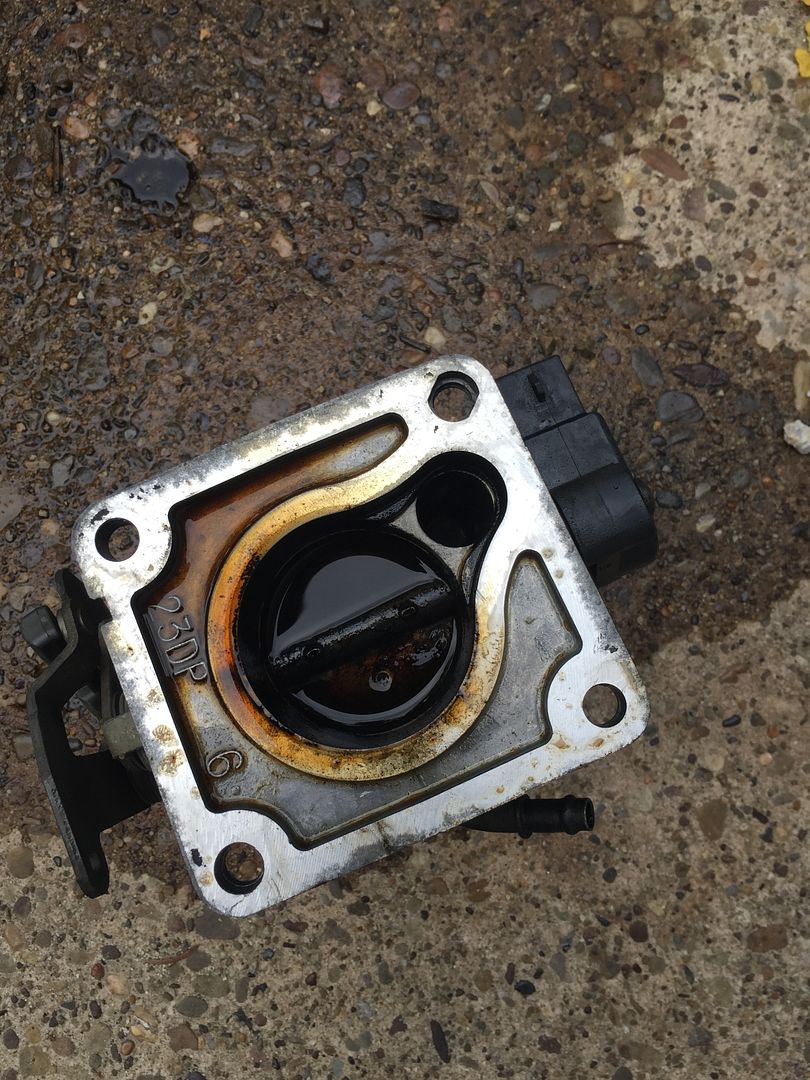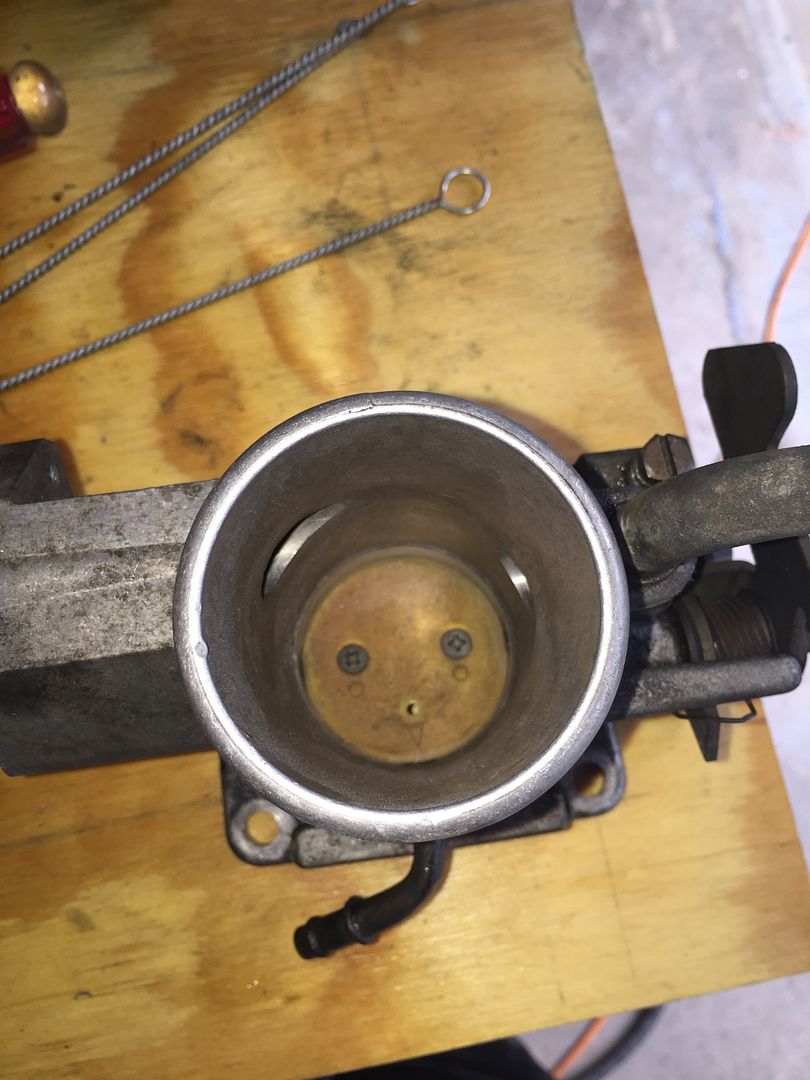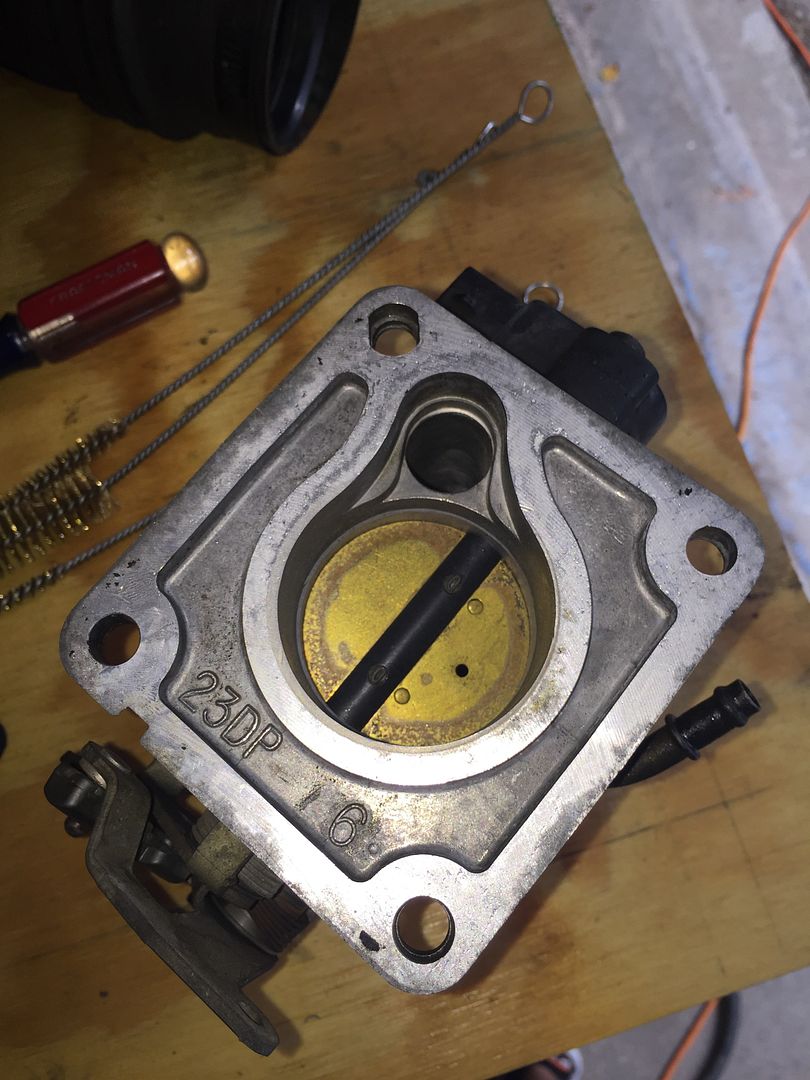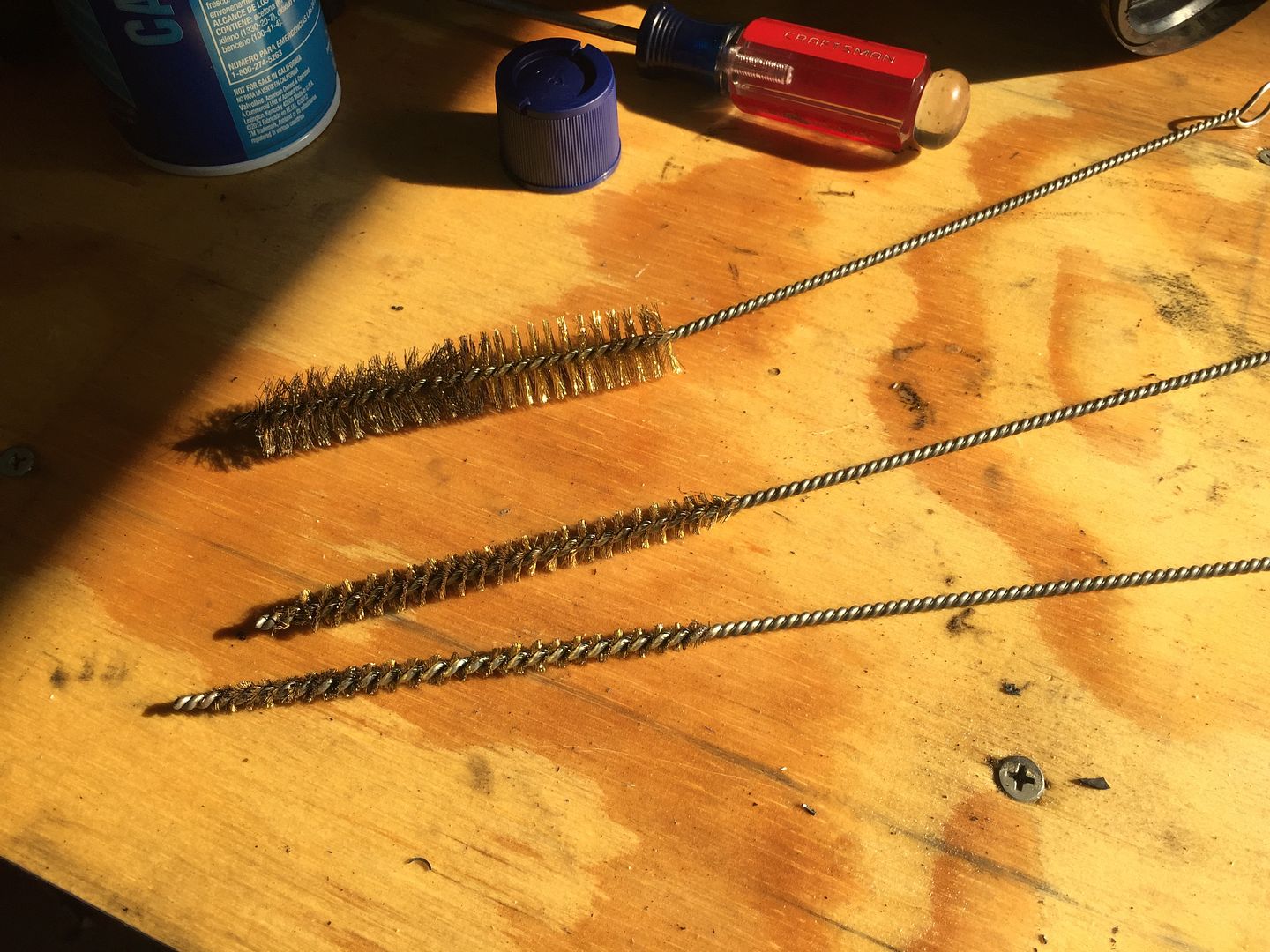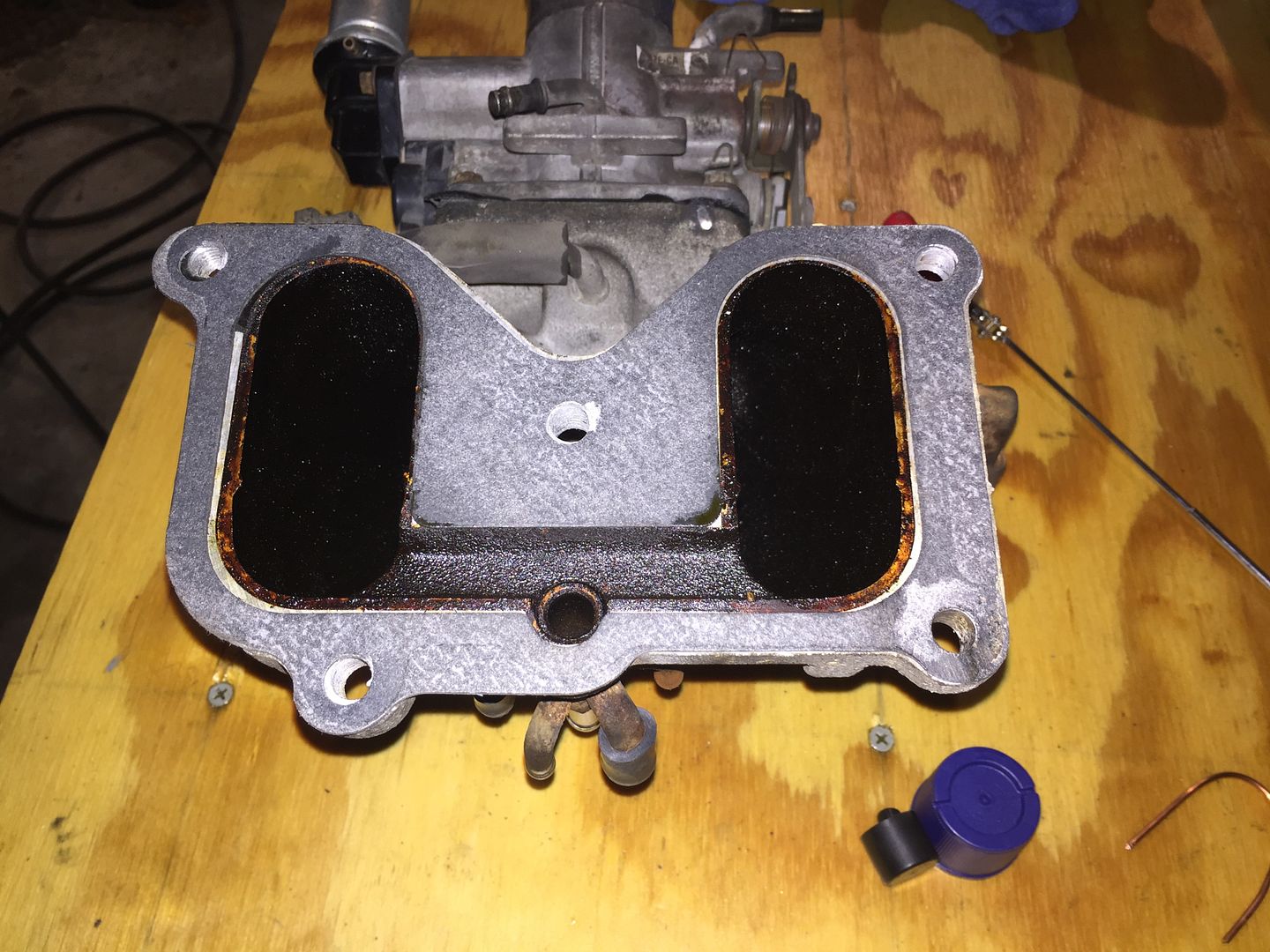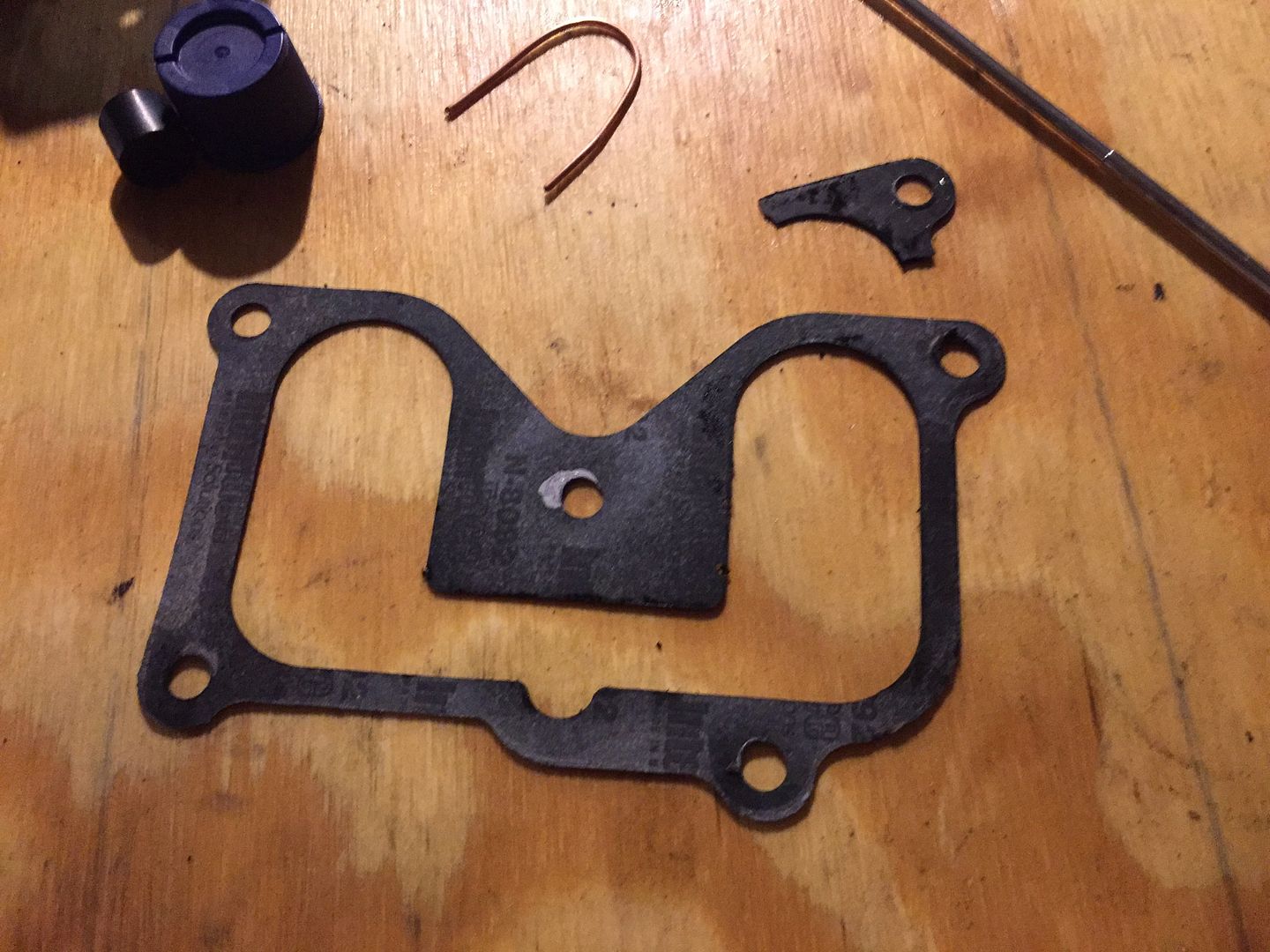Vacuum Brake Booster Testing and Diagnosis
This procedure will require the use of a hand operated vacuum pump with a vacuum gauge.
If you do not own one it can often be rented or borrowed from most “big box” parts stores. (Note:
18”HG is the minimum engine vacuum at idle in gear to effectively operate a vacuum booster
1) Remove vacuum hose from check valve on booster. Place hose from vacuum pump onto
check valve and draw booster to 20” of vacuum.
2) Let booster sit with vacuum applied for 5 minutes. If vacuum does not stay steady at 20” it is
faulty and needs to be replaced. If vacuum does hold steady at 20” proceed to step 3.
3) With 20” of vacuum in booster depress brake pedal once and release it. The booster should
transfer some but not the entire vacuum in reserve. Depending on how hard the pedal is
depressed it is normal to see 5-10” of vacuum depleted from reserve. The most important
thing is to ensure the booster does transfer vacuum but does NOT transfer the entire vacuum
in its reserve. If vacuum remains at 20” OR goes to zero the booster is bad and will need to be
replaced. If vacuum transfer is within the above parameter proceed to step 4.
4) Once again draw booster down to 20” of vacuum. Go inside car and depress brake pedal and
hold down for 30 seconds. You should see the gauge drop slightly and then hold steady.
Vacuum should stay steady as long as you are holding the pedal down. If vacuum drops while
pedal is being held down the booster is faulty and will need to be replaced.

